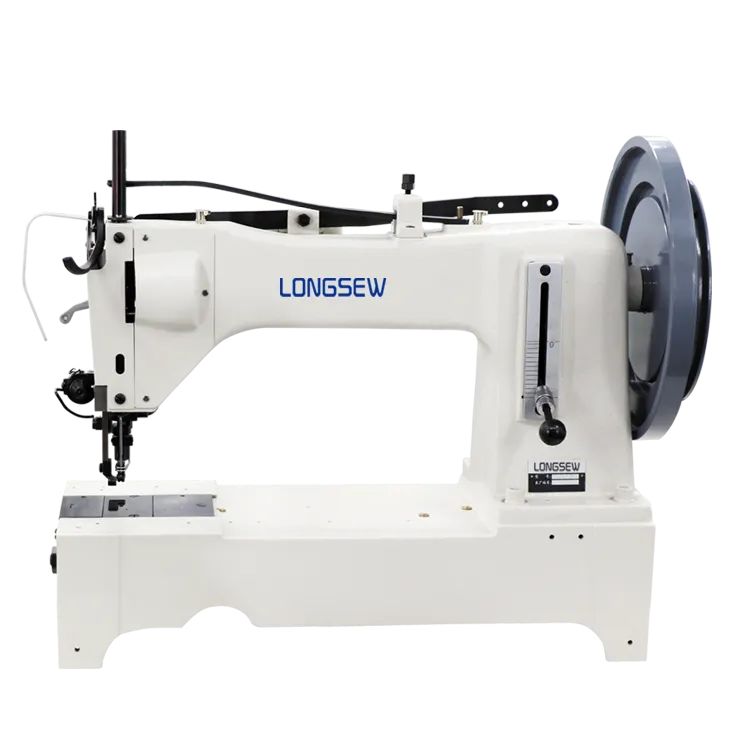Sewing Machine Techniques for Leather Stitching Projects and Tips
Stitching Leather with a Sewing Machine A Comprehensive Guide
Stitching leather with a sewing machine is an art form that combines functionality with aesthetics. Whether you're a seasoned leatherworker or a novice, understanding how to properly use a sewing machine for leather can elevate your projects and help you create stunning pieces that stand the test of time. This article will guide you through the essential steps, techniques, and tips for stitching leather effectively.
Choosing the Right Sewing Machine
Not all sewing machines are created equal, especially when it comes to stitching leather. A heavy-duty machine is often necessary, as leather is thicker and tougher than traditional fabrics. Look for machines with strong motors and the ability to handle different needle sizes. Brands like SINGER, JUKI, and Brother have specific models designed for leather work. Ensure that the machine has adjustable stitch length settings, as longer stitches generally work better on leather to avoid perforating it.
Selecting the Appropriate Needle and Thread
When stitching leather, selecting the right needle and thread is crucial. A leather needle, characterized by its wedge-shaped tip, is designed to pierce the material without causing damage. Depending on the thickness of your leather, you may need a needle size ranging from 90/14 to 110/18.
For thread, polyester or nylon threads are generally preferred for leather projects because of their strength and resistance to wear. Opt for a heavier weight thread, such as Tex 70 or Tex 90, for a robust stitch that will hold up over time.
Preparing Your Leather
Before stitching, it’s essential to prepare your leather properly. Cut out your leather pieces with precision and ensure the edges are even. Use a ruler and a rotary cutter or a sharp knife for clean cuts. If necessary, punch holes for stitching to guide your sewing machine better and prevent the leather from tearing. Consider using a mallet and a pronged stitching awl to create evenly spaced holes that will ensure a consistent and professional-looking stitch.
Setting Up Your Sewing Machine
stitching leather with sewing machine

Once you have your machine, needle, thread, and leather ready, it’s time to set up. Thread your machine according to the manufacturer’s instructions, ensuring to use the appropriate tension settings for thicker materials. Adjust the stitch length to be longer than usual, typically between 3 to 4 mm, as this not only enhances the aesthetic quality but also minimizes the risk of damaging the leather.
Techniques for Stitching Leather
When it comes to actual stitching, maintain a steady pace to avoid uneven stitches. Start by placing the leather pieces under the presser foot and lowering it to secure the material. Always sew slowly when working with leather to maintain control.
To create decorative stitches or to make the stitching more attractive, consider using a zig-zag or decorative stitch type available on your machine. Be sure to practice on scrap leather before attempting your actual piece to get comfortable with the machine's handling.
Post-Stitching Care
Once you have completed your stitching, it’s time to give your leather the treatment it deserves. Trim any excess threads and apply a leather conditioner to the stitched areas to maintain flexibility and prevent cracking. If your project involves edges, consider using a beveler to smooth them out for a polished finish.
Troubleshooting Common Issues
Even experienced leatherworkers can face challenges when stitching leather. Common issues include skipped stitches or needle breakage. If you encounter skipped stitches, ensure that you’re using the right needle, and check the thread tension. If needles keep breaking, reduce the pressure of the presser foot or switch to a thicker needle that can handle the material.
Conclusion
Stitching leather with a sewing machine is a rewarding skill that opens up a world of creativity and craftsmanship. By choosing the right tools, preparing your materials, and mastering proper techniques, you can create beautiful, durable leather items from bags to belts and beyond. Whether you're crafting for personal use or considering a small business venture, learning to stitch leather can lead to many fulfilling projects. Happy sewing!
-
Boost Production Efficiency with a Pattern Sewing MachineNewsAug.29,2025
-
Industrial Excellence with the Best Heavy Duty Sewing MachineNewsAug.29,2025
-
Precision and Power with the Best Pattern Sewing MachineNewsAug.29,2025
-
Reliable Bulk Packaging Starts With the Right FIBC Sewing MachineNewsAug.29,2025
-
Advanced Packaging Solutions: Elevate Productivity with Jumbo Bag Sewing Machine and Industrial Stitching EquipmentNewsAug.29,2025
-
High-Performance Solutions for Bulk Packaging: FIBC Sewing Machine and MoreNewsAug.29,2025
-
Maximize Efficiency with an Industrial Cylinder Arm Sewing MachineNewsAug.28,2025


























